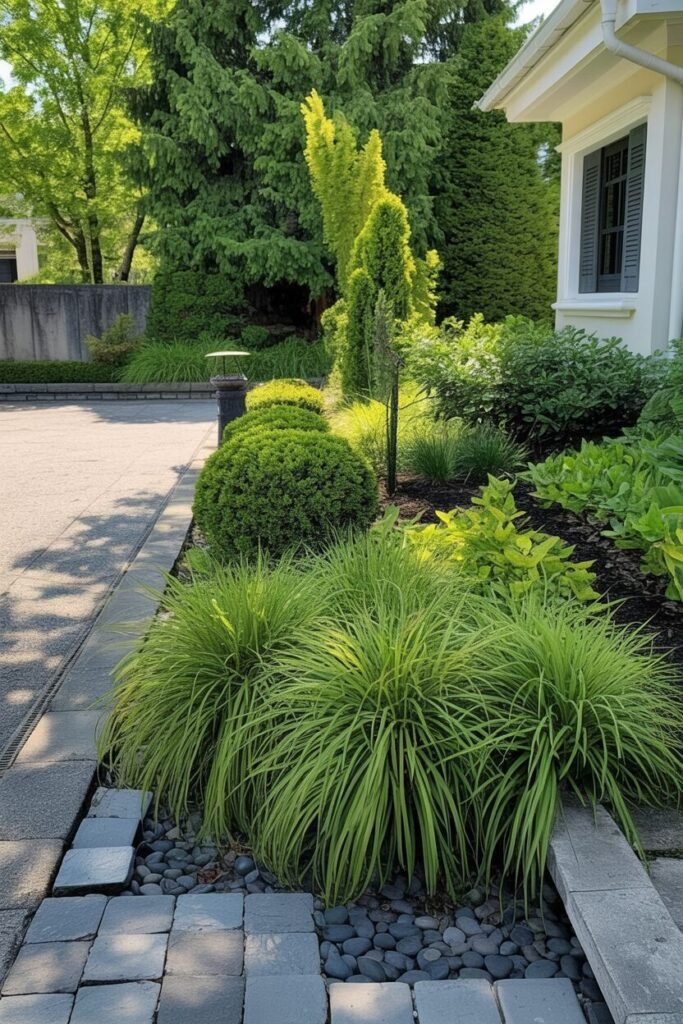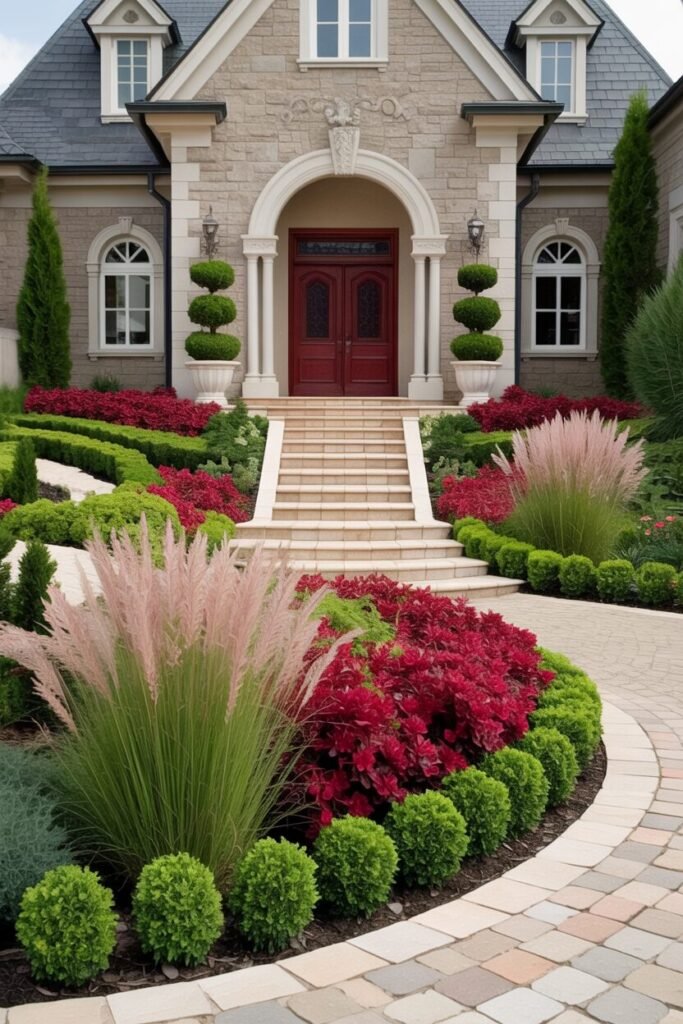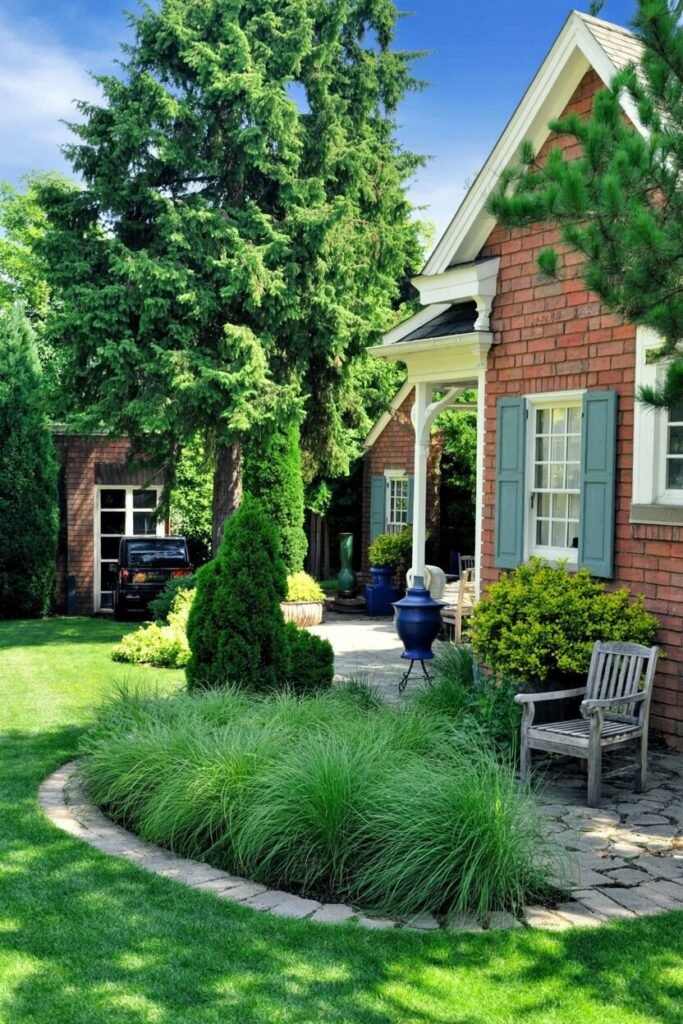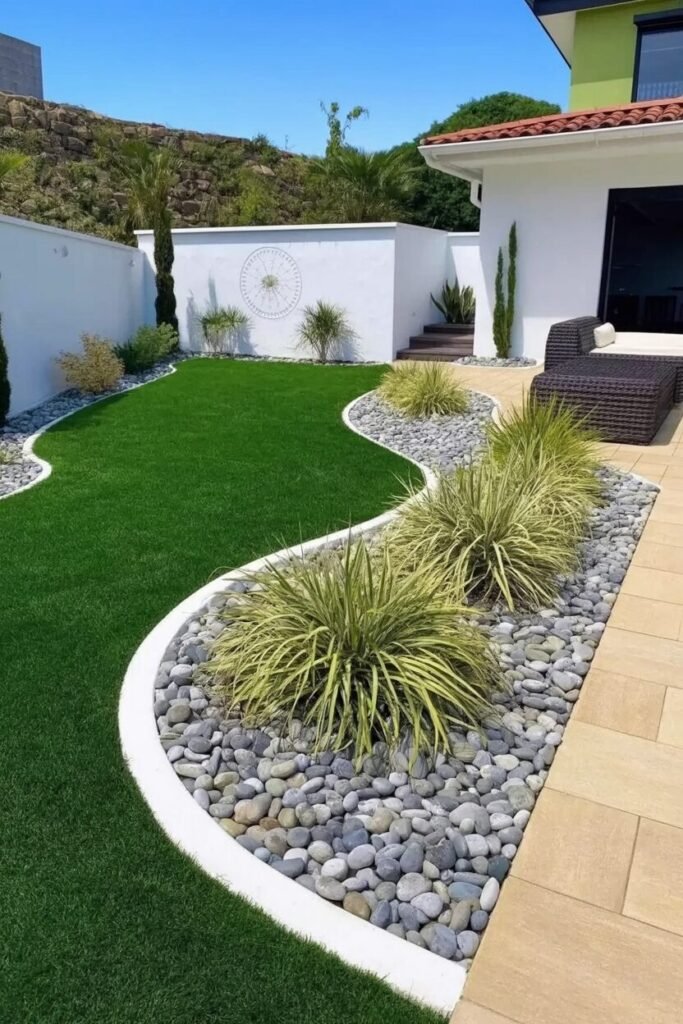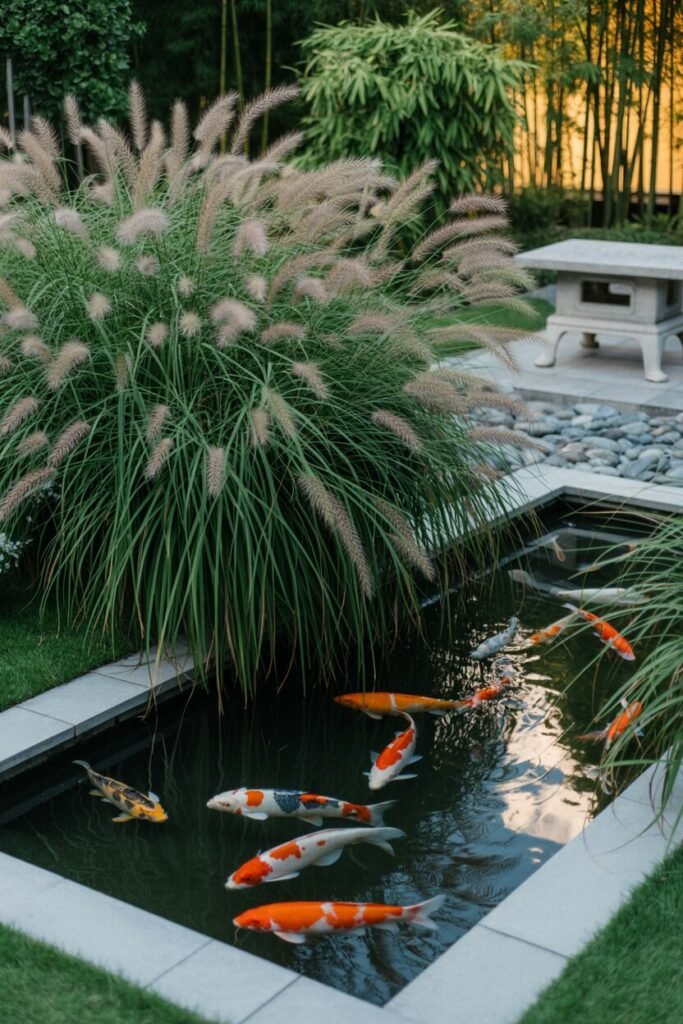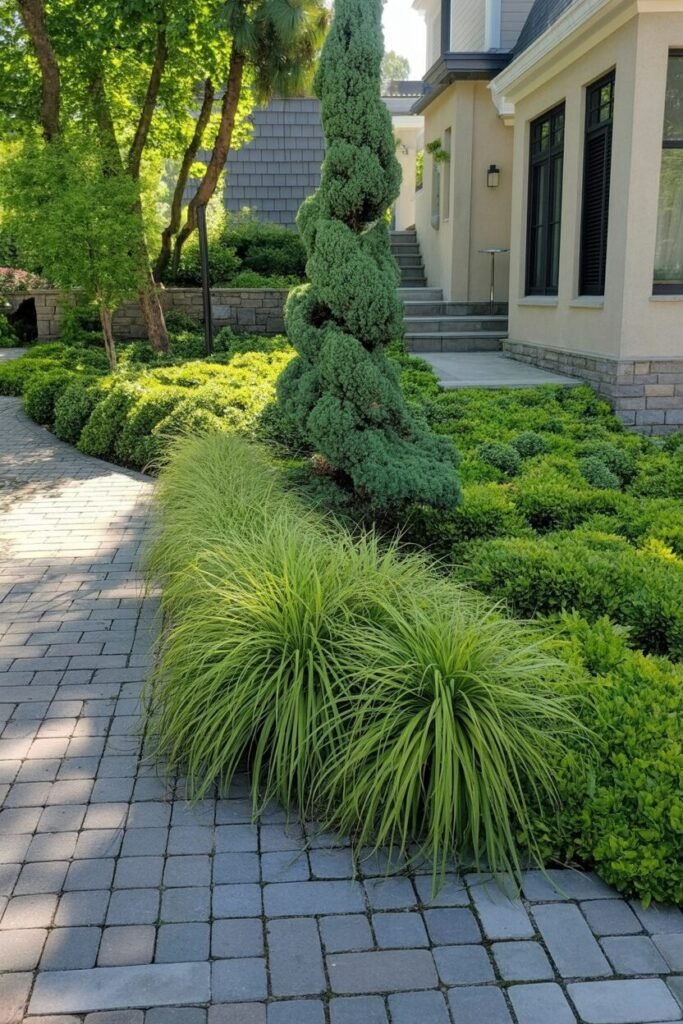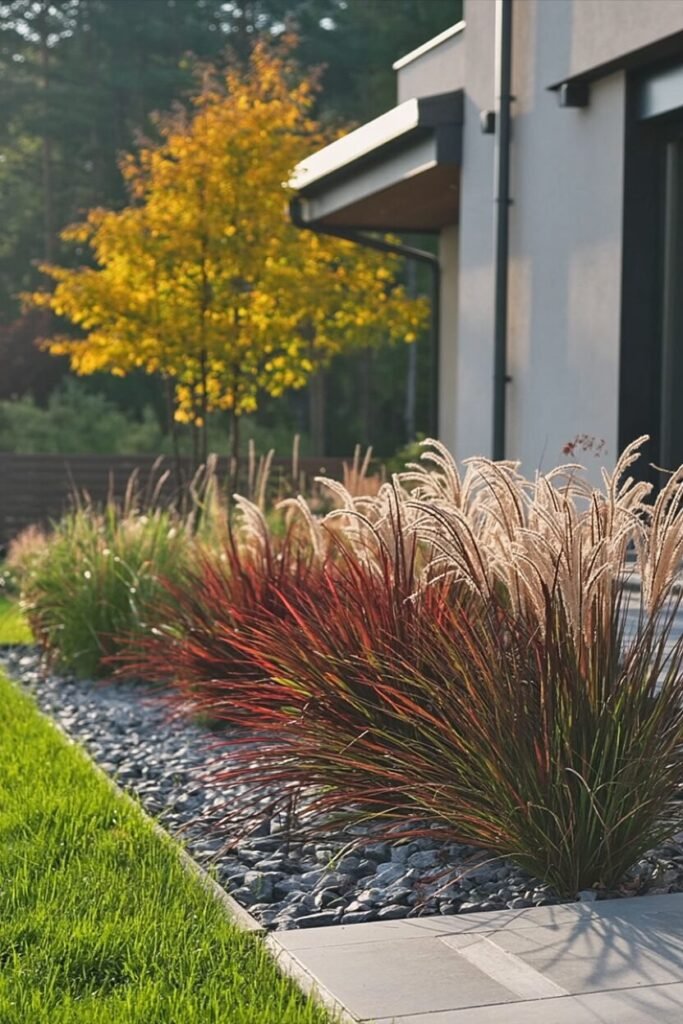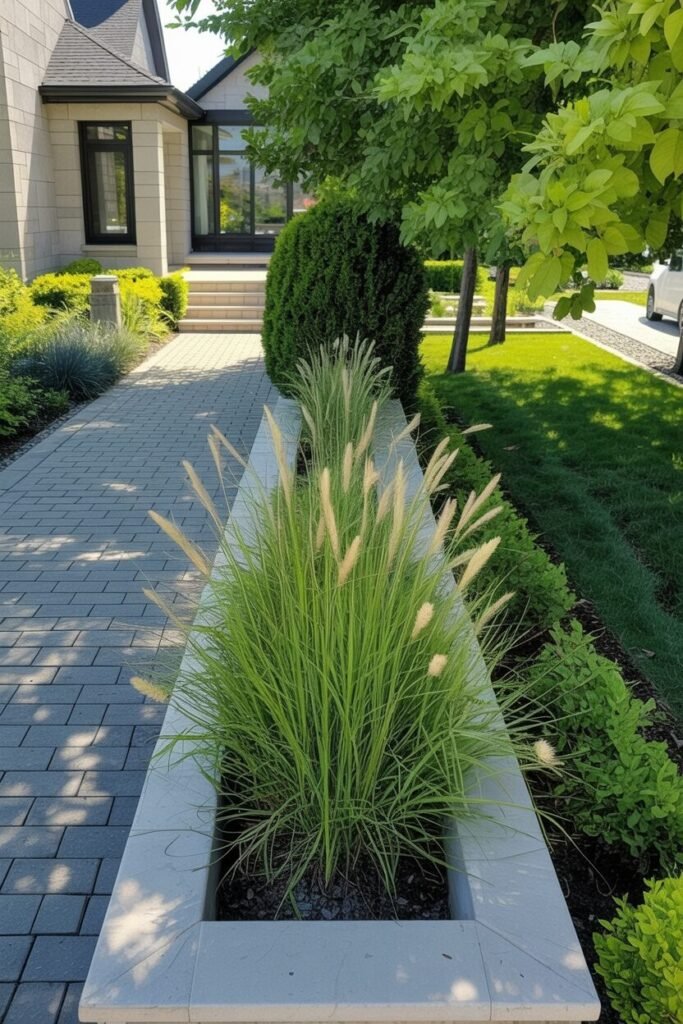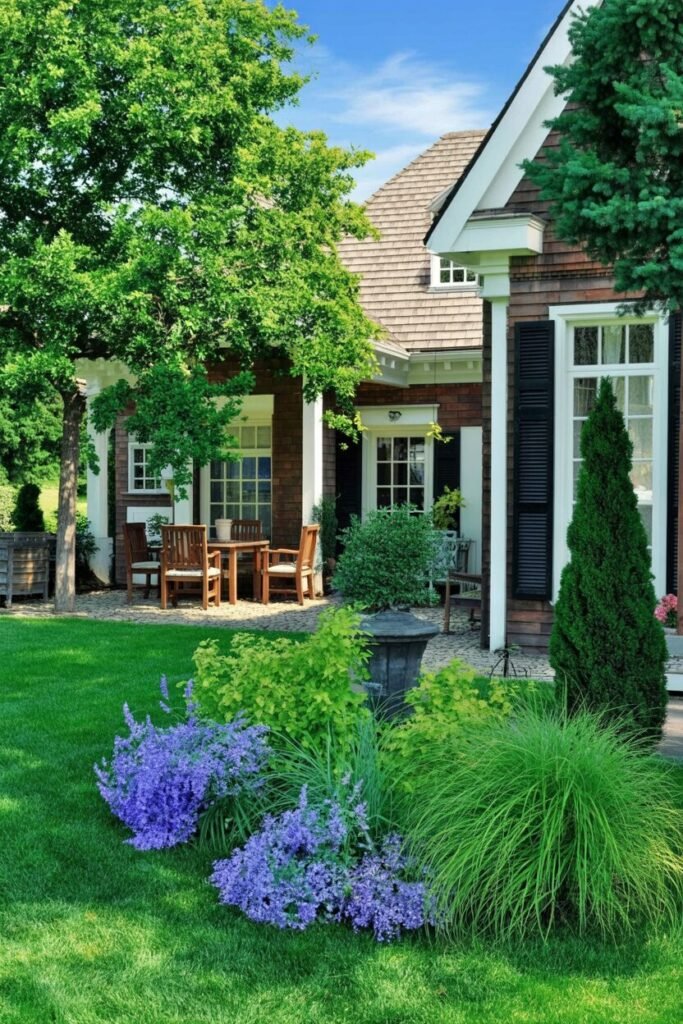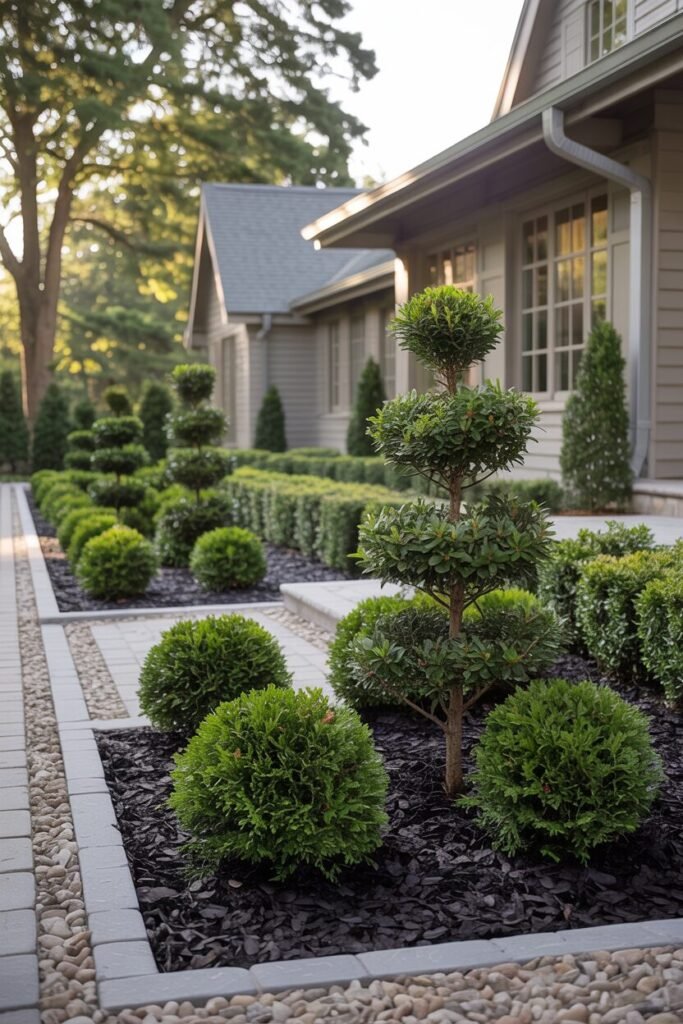The Ways Ornamental Grasses Can Redefine Your Landscape’s Look
Forget the idea that landscaping is a stuffy, complicated affair. We believe it should be fun, expressive, and a little bit wild—just like a fantastic weekend.
And that’s where ornamental grasses come in! They are the secret ingredient we love to use to bring a landscape to life, offering a dynamic alternative to traditional shrubs and flowers. They whisper in the breeze, catch the sunlight, and add a layer of texture that is truly captivating.
As a team of passionate garden enthusiasts, we are thrilled to share our insights on how these versatile plants can transform your outdoor space from just green to absolutely gorgeous. We’ve covered ten different stunning ideas, so get ready to be inspired!
The Grand and Glorious Entryway
Who said grasses can’t be glamorous? This stunning entryway shows that ornamental grasses can be the star of a highly formal and vibrant garden. In our professional opinion, the principle of balance is perfectly executed, with the large, soft plumes of the grasses providing a beautiful counterpoint to the tightly clipped boxwoods and the vibrant red foliage.
This is a garden that makes a statement! The grasses are a fantastic way to add a layer of texture and height, drawing the eye upwards towards the home’s grand entrance.
If you’re going for a bold look, we suggest you select grasses with dramatic plumes and place them in clusters to create a powerful visual impact that will make your neighbors green with envy. Our clients often tell us how much they love the way these plants catch the light and add an ethereal quality.
The Classic Cottage Charm
This cozy, brick cottage garden is a masterclass in blending formality with a relaxed, inviting feel. Here, the ornamental grasses create a lush, feathery border, softening the edges of the paved patio and the rigid brickwork.
We love how the principle of transition is perfectly illustrated, as the grasses gently lead your eye from the hardscape to the soft, grassy lawn. They also add a vertical element that breaks up the horizontal planes and keeps things interesting. If you want to achieve this look, we recommend pairing your grasses with classic garden elements like a simple wooden bench and traditional perennial flowers.
This style is about creating a sense of history and comfort, like your favorite old sweater. Our years of experience have taught us that adding these soft layers can instantly make a space feel more lived-in and welcoming.
The Minimalist Modern Masterpiece
Clean lines, smooth surfaces, and a zen-like vibe—this landscape proves that less is definitely more. We see the principle of repetition at play here, with the soft, flowing grasses creating a beautiful contrast against the stark white walls and the perfectly manicured lawn.
The chunky river rocks add a grounding element and a sense of calm, like a spa day for your garden. This design is all about controlled chaos, where the wildness of the grasses is contained within a well-defined border (because we all need a little structure, right?).
To replicate this look, choose a grass with a simple, spiky texture and a consistent color. Don’t be afraid to embrace curves and bold shapes to create a visual journey through your space—it’s like a garden dance party! We’ve found that this style is particularly effective for small urban yards, giving them a sleek, intentional feel.
The Rustic Woodland Retreat
This landscape feels like a natural extension of the forest, with its earthy tones and organic textures. We think the principle of variety is in full effect, showcasing different types of grasses with varying heights and plumes. The grasses, paired with large boulders and mulch, create a beautiful, uninhibited look.
The stepping stones break up the space and create a path, inviting you to wander and explore—perfect for when you’re escaping the in-laws. Recreating this style is about embracing nature’s imperfections.
Use a mix of grasses, some with tall, dramatic plumes, and others with a more clumping habit, to create an authentic, layered effect that says, “I woke up like this.” Trust us, this is a look that requires minimal fuss and will only get better with age.
READ MORE >> 9+ Grass-free Landscaping Ideas for Front Yard
The Serene Japanese-Inspired Oasis
This peaceful garden is a testament to the power of a single plant to define a space. As we’ve learned over the years, the principle of simplicity is key here. A large, fluffy ornamental grass creates a stunning focal point, drawing your attention and softening the edges of the sleek koi pond.
The delicate, arching plumes add a sense of movement and tranquility, almost like a natural fountain that doesn’t need a plumber. Paired with a few carefully placed rocks and a traditional stone lantern, the grass helps create a perfectly balanced, meditative space. When creating a zen garden, we always say that less is more.
Choose a singular, beautiful specimen and let it shine, supported by other simple, natural elements to create a harmonious and truly relaxing atmosphere that feels like a private escape.
The Textured and Layered Elegance
This landscape is a feast for the eyes, with its rich layers of green textures. The principle of contrast is the star here, with the bright, almost neon-green of the ornamental grass providing a striking visual against the deep green of the surrounding boxwoods and the dark, spiral topiary. The grass, with its fine, flowing blades, adds a softness that beautifully breaks up the dense, round shapes of the other plants. It’s like the garden’s fun-loving rebel, adding a playful element to a more formal setting. To replicate this, we suggest you use grasses with a distinct color or texture and place them strategically to create a dynamic visual rhythm. This design proves that sometimes, the best way to make a statement is through subtle, yet impactful, layering, and it’s a great way to showcase your deep understanding of horticultural principles.
The Colorful and Dynamic Border
This stunning garden bed is a masterclass in using color and texture to create a powerful visual impact. Here, the principle of repetition with variation is expertly applied, with clumps of the same ornamental grass planted in a row, but showcasing a beautiful progression of color from deep red to light blonde.
The dark river rocks provide a clean, modern frame for the vibrant plants, making the colors pop even more. To get this look, we recommend choosing a grass variety known for its seasonal color change and planting it in a simple, linear design.
This style brings a surprising amount of visual interest and is a great way to show off your sophisticated gardening chops to your friends and family. It’s like a living piece of modern art, and we are confident that anyone can achieve this look with the right plant choice and a little bit of planning.
The Romantic, Pollinator-Friendly Pathway
This garden path feels like a fairy tale, with its charming mix of textures and colors. Here, the principle of unity is beautifully achieved by blending ornamental grasses with flowering perennials like Coneflowers and Russian Sage.
The soft, mounding grasses serve as a foundation, while the flowers pop with color, attracting buzzing bees and butterflies. This is a garden that’s not just pretty to look at, but is also a bustling ecosystem, a living, breathing space that gives back. To recreate this look, we suggest using low-growing grasses to line the path, then planting taller, pollinator-friendly flowers behind them to create a sense of depth and wildness.
The natural, free-form design makes it seem effortlessly beautiful, even if you put a lot of hard work into it (our secret!). It’s a wonderful way to add a touch of whimsy and show off your eco-conscious side, which, in our opinion, is a major style win.
READ MORE >> “10 Full-Sun Perennials for Easy Container Gardening“
The Potted Patio Oasis
No yard? No problem! This image shows that ornamental grasses aren’t just for in-ground beds—they are fantastic for container gardening, too. This beautifully potted grass, with its soft plumes, brings life and height to an otherwise flat patio space.
The principle of focal point is highlighted here, as the large planter becomes the main attraction, drawing your eye with its graceful form. The different sizes of the terra cotta pots create a pleasing arrangement that feels both curated and relaxed.
We’ve seen firsthand how using grasses in pots is a great way to add seasonal interest and flexibility to your space. You can move them around to find the perfect spot, or even take them with you if you move (less stress than moving a whole garden, trust us!). It’s a low-commitment way to test the waters with these beautiful plants.
The Bold, Architectural Statement
Who says a garden bed has to be a messy affair? This image shows that ornamental grasses can be used with a structured, minimalist approach. Here, a single, elegant grass is planted in a clean, modern planter, creating a strong focal point.
This demonstrates the principle of scale, as the height and volume of the grass are perfectly balanced with the size of the planter and the pathway. The repetition of the pavers and the clipped hedges provides a backdrop that makes the grass truly pop and look like a piece of living sculpture.
To achieve this modern look, we recommend selecting a grass with a strong, vertical habit and using it to create a series of clean lines. It’s the perfect solution for adding life to a contemporary space without clutter, and frankly, it makes you look like a design genius with minimal effort.
Go Ahead, Get Your Grass On!
We hope these ten ideas have sparked some serious inspiration and convinced you that ornamental grasses are a game-changer for any landscape. From minimalist modern to rustic and romantic, there’s a grass for every style and every yard (or even patio!).
Our number one piece of advice? Don’t be afraid to experiment. These plants are incredibly forgiving and surprisingly low-maintenance, so it’s hard to go wrong. Whether you start with a single potted specimen or create a grand, layered border, you’ll quickly see the difference they make.
So go ahead, trade in the ordinary for the extraordinary. Your landscape is waiting for its moment to shine, and we are confident that ornamental grasses are just the ticket. Happy gardening!

